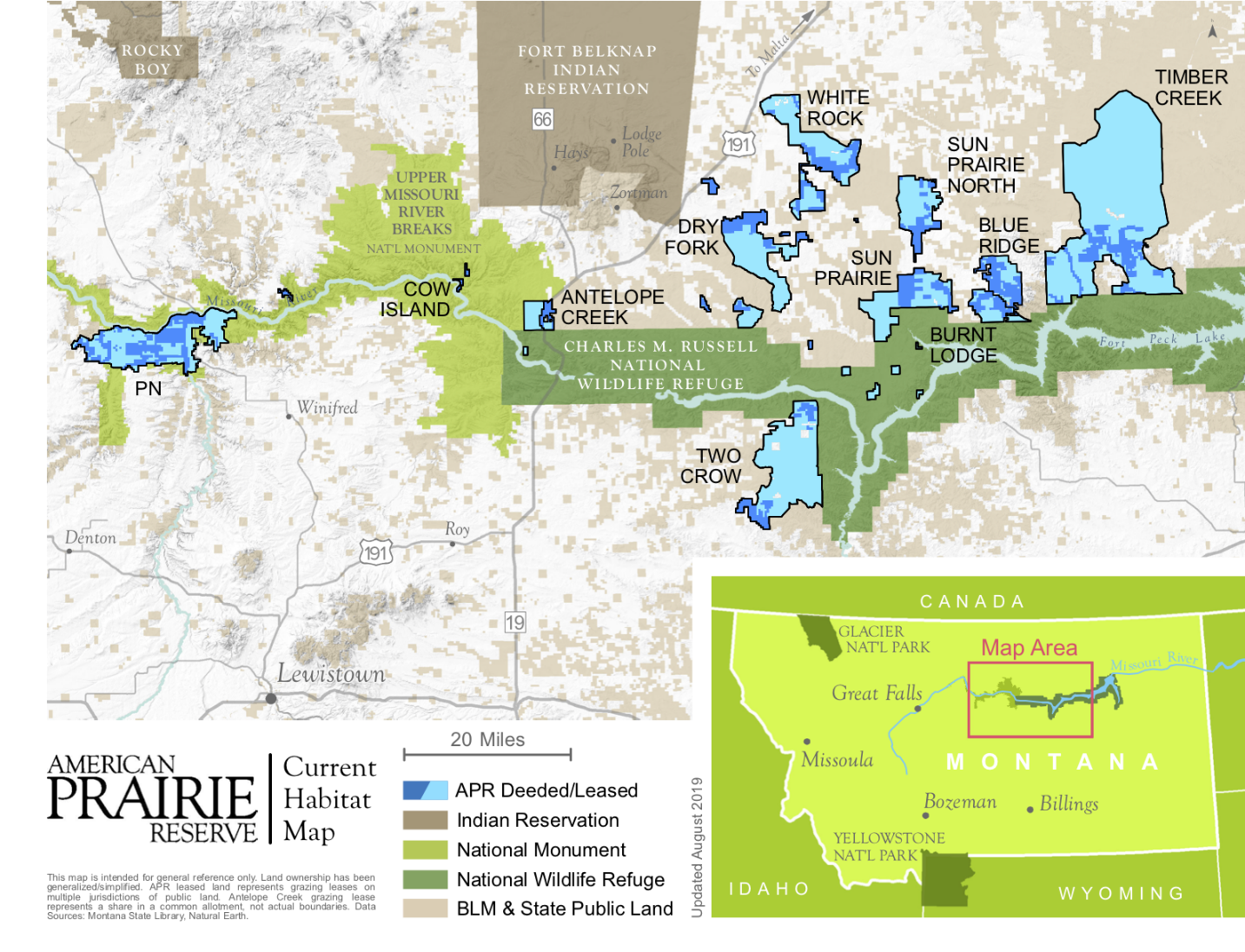American Prairie Reserve (APR)
is a private effort dedicated to creating the largest nature reserve
in the contiguous United States. Its location in the eastern Montana
prairies has world-wide significance, as grasslands are the earth’s
most depleted and altered major biotic community.
APR grows by purchasing habitat from willing sellers. These private
lands provide access to public, mostly federal Bureau of Land
Management (BLM) lands, in associated grazing allotments. APR’s
vision is to biologically reconnect the existing network of public
lands, including the Charles M. Russell National Wildlife Refuge
(CMR), into a large, multi-jurisdictional preserve as part of
America’s natural heritage. See more on APR’s goals
and activities at americanprairie.org.
Currently, APR’s deeded land and associated grazing allotments
share about 48 miles of perimeter with the western portion of
the CMR.

APR works to rebuild wildlife
populations, largely by restoring and reconnecting their habitats,
including grasslands, river breaks, streams and riparian areas.
Their management includes reintroducing (prescribed) fire as a
natural ecological process, and removing interior fences that
restrict natural movements and habitat selection by bison and
pronghorn. All prairie wildlife, from insects to bison, will benefit
from APR. Many of these species have become rare or have been
extirpated, notably swift fox, bison, prairie dogs, many grassland
birds, cougars, pronghorn and black-footed ferrets. However, any
controversial decisions regarding reintroduction of wolves or
grizzly bears in the region will have to be made by Montana Fish,
Wildlife & Parks and/or the U. S. Fish & Wildlife Service,
augmented by the will of the general public.
APR’s intentions for bison are outlined in a Management
Plan available on its website. Its long-term goal is to “establish
a self-sustaining, ecologically effective population of at least
10,000 bison that is semi-free ranging and subject to the forces
of natural selection”. It would be “a population sustaining
a variety of consumptive and nonconsumptive values that contributes
to cultural, aesthetic, economic and social well-being.”
APR currently has about 830 bison on 4 areas of its land holdings.
They are, legally, private livestock. Unlike the majority of today’s
bison, they lack any evidence of cattle-gene introgression from
past attempts to produce “beefalo”. Importantly, they
are free of the disease, brucellosis, which might possibly be
transmittable to local cattle, though such transmission has never
been verified to occur.
Although they are private livestock, APR “seeks to manage
its bison, to the extent practical – as a resource for the
common good”.
A goal of the Montana Wild Bison Restoration Coalition is to establish
bison on public land and private land where bison are accepted,
within and near the CMR National Wildlife Refuge. Aside from the
CMR, most of that public land will be BLM land, and most of the
private land will be APR holdings (see map above).
APR’s intentions for a large multi-jurisdictional nature
reserve with a large bison herd, wide-ranging over a diverse landscape
and managed as a public resource for the common good are congruent
with the Coalition’s goal. We anticipate beneficial collaboration
among APR, the CMR, BLM and the people of Montana to achieve mutual
goals for wild, public bison.

